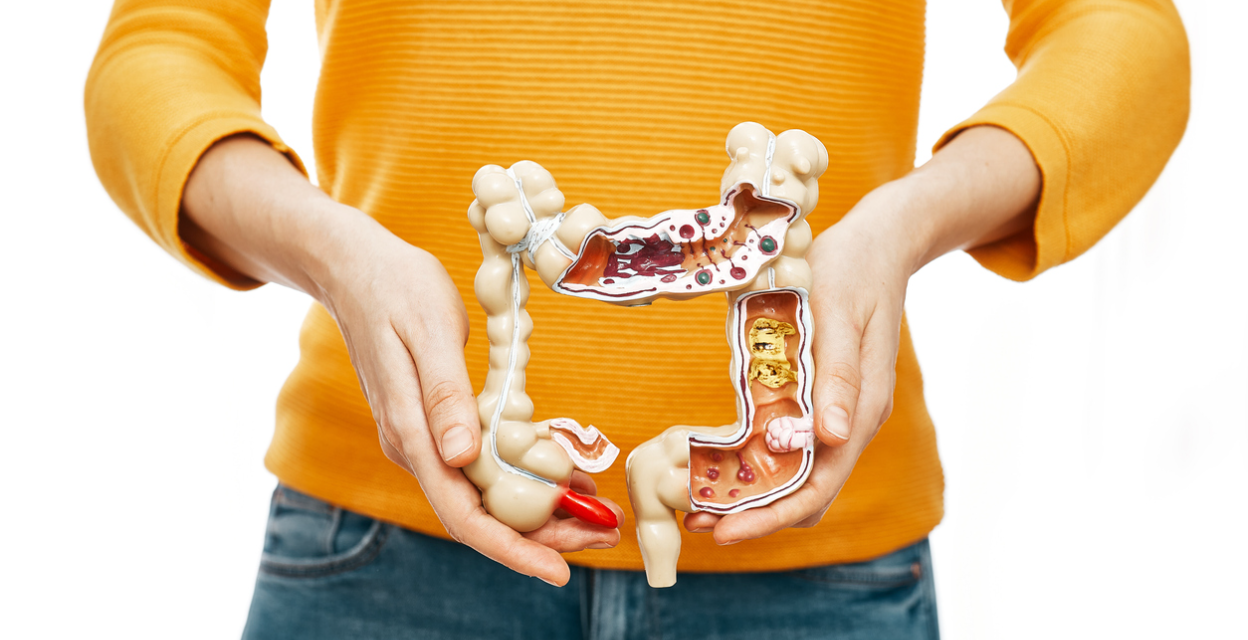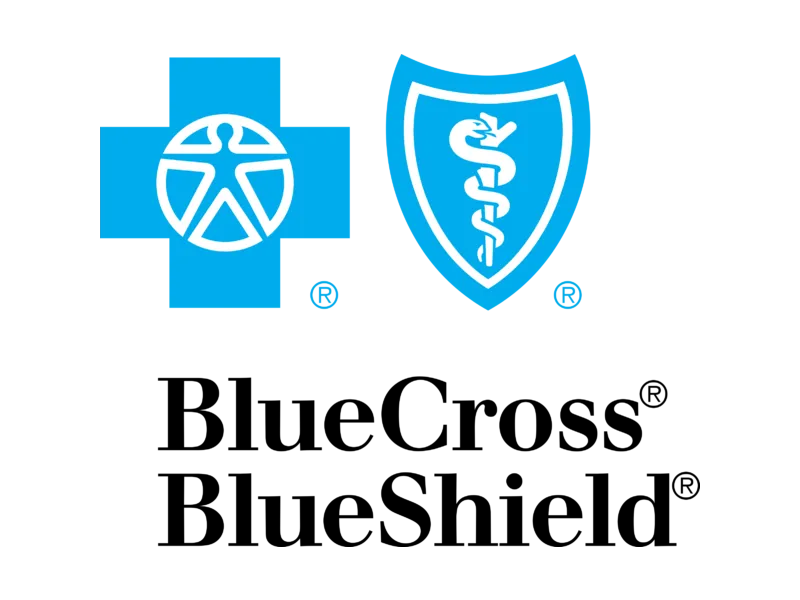Key Points
- A Crohn's disease diet plan varies between flare-ups and remission, two phases that need different food strategies
- During flare-ups, focus on gentle, low-fiber foods like white rice, well-cooked vegetables, and lean proteins to give your gut a rest
- Remission allows for more variety with anti-inflammatory foods and introduces new items slowly
- Working with a registered dietitian helps create personalized eating strategies since there is no universal Crohn’s diet; it varies from person to person
Having Crohn's disease can make meals feel like Russian roulette. One day, you eat a sandwich and you're fine. The next time, the same sandwich may land you in trouble. The unpredictability and discomfort can be exhausting.
If you’re tired of wondering what to eat, you’re not alone. The truth is, managing Crohn’s means understanding that your dietary needs can change, sometimes dramatically, depending on whether your condition is active or in remission.
This guide is designed to cut through the confusion. We’ll break down the two main phases of eating with Crohn’s disease: managing a flare-up and maintaining remission. We also provide a flexible 7-day meal plan to serve as your starting point.
What is the best diet for Crohn’s disease?
According to Registered Dietitian, Emily Bixler, RD, “When it comes to Crohn’s disease, there isn’t a clear diet that one should follow. [As dietitians], we often need to look at where you are in your progression of Crohn’s disease.”
What works for you may trigger symptoms in another. Early studies suggest personalized nutrition could help complement regular treatment. It involves working with your medical team and a dietitian to identify foods that work for you.
If you have Crohn’s, it can help to think of your diet in 2 distinct phases based on symptoms:
- Flare-ups: During this phase, when symptoms and discomfort are at their highest, the focus is on reducing inflammation and giving your digestive system a much-needed rest.
- Remission: During remission, when acute symptoms are low, the focus is on rebuilding, nourishing your body, and expanding your diet to include a wider variety of anti-inflammatory foods than in the flare-up phase.
A food and symptom journal is your best friend in this process. Tracking what you eat and how you feel can help you and your healthcare team identify your personal trigger foods and safe foods.
Eating during a Crohn’s flare-up: resting the gut
Bixler, RD, says, “If you’re in an active flare or recently had surgery to remove damaged areas, we may need to have foods that are softer with less fiber.”
Managing diet during a Crohn’s flare-up
- Go Low-fiber: Temporarily limit high-fiber foods, like raw vegetables, whole grains, nuts, and seeds. Low-residue or low-fiber diets are often recommended to reduce bowel movements and abdominal pain during a flare
- Cook everything thoroughly: The cooking process helps break down fibers, making food easier to digest. Steaming, boiling, baking, and poaching are your best bets. Avoid frying
- Choose lean proteins: Stick to easily digestible proteins, such as skinless chicken, fish, eggs, and tofu
- Focus on soluble fiber: Although overall fiber intake is low during this phase, soluble fiber (which dissolves in water to form a gel) can be particularly soothing. Good sources include bananas, applesauce, and oatmeal
- Stay hydrated: Diarrhea can lead to dehydration. Sip on water, clear broths, and electrolyte drinks throughout the day
- Eat smaller, more frequent meals: Instead of 3 large meals, try five or six small ones to avoid overloading your digestive system
Foods to eat during a Crohn’s flare-up
- Refined grains: White rice, white bread, plain pasta, and refined crackers
- Low-fiber cereals: Cream of wheat or oatmeal (made with water or a tolerable milk alternative)
- Well-cooked vegetables: Peeled potatoes (white or sweet), carrots, green beans, and asparagus tips. Pureed vegetable soups are also a great option
- Low-fiber fruits: Bananas and smooth applesauce. Cantaloupe and honeydew melon may also be tolerated
- Lean proteins: Skinless chicken or turkey (baked or poached), white fish (like cod or tilapia), and scrambled eggs
- Liquids: Water, bone broth, and chamomile tea
Foods to avoid or limit during a Crohn’s flare-up
- Raw vegetables and fruit
- Whole grains, nuts, and seeds
- Legumes (beans, lentils, chickpeas)
- High-fat, greasy, or fried foods
- Tough or processed meats (like sausage or steak)
- Spicy foods
- Caffeine and alcohol
- Sugary drinks and sweets
- Spicy seasonings (cayenne, hot peppers, paprika)
- Heavy spices like cumin or chili powder
Bixler, RD notes, “Keep in mind that some foods like spicy foods, foods with high fat or sugar contents, or processed foods can trigger a Crohn’s flare. These can worsen pain, GI issues like diarrhea or constipation, and even damage the colon itself. This is something that is helpful to work on with a dietitian.”
3-day meal plan for a Crohn's flare-up
A Crohn’s flare-up can last anywhere from a few days to months. In rare cases, they can last even longer.
During a flare-up, simplicity in your diet is key. This 3-day template is designed to be gentle on your digestive system and give you an idea of the types of meals you could have.
Gia Eapen, MD, notes, “Everybody reacts differently to different foods, so track how you feel and consult a healthcare provider before you start a new diet. For example, most spices may irritate people with Crohn’s, but some tolerate turmeric and ginger.”
Day 1
Breakfast: Cream of wheat made with water, with a mashed banana mixed in
Lunch: Poached chicken breast with a side of steamed carrots and white rice
Dinner: Baked cod with mashed white potatoes (no skin)
Snacks: A cup of smooth applesauce, a few plain saltine crackers
Day 2
Breakfast: Scrambled eggs with two slices of white toast
Lunch: Leftover baked cod and mashed potatoes
Dinner: Plain pasta with a little olive oil and well-cooked, pureed zucchini
Snacks: A cup of bone broth, a ripe banana
Day 3
Breakfast: Oatmeal made with water
Lunch: Turkey and rice soup (made with white rice and well-cooked carrots)
Dinner: Scrambled tofu with a side of steamed green beans
Snacks: Smooth applesauce, a cup of chamomile tea
What to eat during Crohn’s remission?
Remission is when your Crohn's symptoms calm down or disappear, giving you a break from the disease.
When things are stable, we really want to ensure you are having a diet with a variety of nutrients,” Bixler, RD, says, “If you are missing part of your colon from the disease, it’s important we increase our focus on the nutrients you might not be able to absorb as well anymore. As always, we want to make sure you are staying hydrated and adding foods that contain both prebiotics and probiotics.”
Key principles for a Crohn’s remission diet
- Introduce foods slowly: Don't rush back to eating everything at once. Introduce one new food every 2-3 days and track your symptoms
- Focus on anti-inflammatory foods: Certain dietary patterns can help manage inflammation. The Mediterranean diet, rich in fruits, vegetables, olive oil, and fish, has been shown to be beneficial for people with Crohn's
- Increase fiber gradually: Start with well-cooked vegetables and soluble dietary fiber sources before moving to raw vegetables and whole grains
- Embrace healthy fats: Incorporate sources of omega-3 fatty acids, like salmon, sardines, and walnuts, which have anti-inflammatory properties
Prioritize gut-friendly foods: Foods rich in prebiotics (like oats and bananas) and probiotics (like yogurt and kefir, if tolerated) can support a healthy gut microbiome
Remission diet: 7-Day meal plan for Crohn's disease
This plan is based on a modified Mediterranean diet, emphasizing whole foods and ingredients that are anti-inflammatory in nature.
Remember to cook vegetables well initially and introduce new items slowly.
Day 1
Breakfast: Oatmeal with almond milk (or another plant-based milk), topped with sliced banana and drizzled with honey
Lunch: Grilled chicken salad with cooked spinach, cucumber (peeled and deseeded), and an olive oil vinaigrette
Dinner: Baked salmon with roasted sweet potato (peeled) and steamed asparagus
Snacks: Plain Greek yogurt, soft-boiled egg with white toast
Day 2
Breakfast: Scrambled eggs with a side of sliced avocado
Lunch: Baked white fish (like cod) with steamed white rice and cooked carrots
Dinner: Turkey meatballs (made with lean ground turkey) with zucchini noodles and a simple tomato sauce
Snacks: Banana with smooth peanut butter, rice cakes with mild cheese
Day 3
Breakfast: Greek yogurt (if dairy is tolerated) with a half cup of blueberries and a spoonful of almond butter
Lunch: Tuna salad (made with Greek yogurt or avocado instead of mayo) on sourdough bread
Dinner: Sheet pan chicken with roasted carrots, broccoli florets, and bell peppers, drizzled with olive oil
Snacks: Cottage cheese (if you tolerate dairy), cantaloupe melon pieces
Day 4
Breakfast: Smoothie made with spinach, a ripe banana, almond milk, and a scoop of plain protein powder
Lunch: Baked cod with mashed sweet potato and steamed zucchini (peeled and deseeded)
Dinner: Lentil soup (ensure lentils are very well-cooked and start with a small portion)
Snacks: Soft white fish (cod or halibut), mashed potatoes
Day 5
Breakfast: Oatmeal with cooked, mashed peaches and a sprinkle of cinnamon
Lunch: Quinoa bowl with roasted chickpeas, roasted red peppers, and a tahini dressing
Dinner: Baked cod with tender-cooked green beans and a side of brown rice
Snacks: Rice cakes with avocado, steamed white rice with olive oil
Day 6
Breakfast: Sourdough toast with a soft-boiled egg and mashed avocado
Lunch: Grilled chicken breast with quinoa pilaf and roasted butternut squash (peeled)
Dinner: Stir-fry with tofu, bok choy, and carrots, using a low-sodium tamari or coconut aminos sauce. Serve with white rice
Snacks: Peeled apple slices, oatmeal with honey
Day 7
Breakfast: Greek yogurt with stewed apples and cinnamon
Lunch: Baked salmon with brown rice and sautéed spinach with garlic
Dinner: Grilled shrimp skewers with a side of roasted zucchini and a small portion of couscous
Snacks: Smooth almond butter on white bread, homemade chicken broth with rice
Beyond the meal plan
The importance of hydration
Eapen, MD, says, “Staying hydrated is always important, but it's especially critical during an active Crohn's flare-up, as diarrhea can lead to significant fluid and electrolyte loss. Aim for plenty of water, broth, and diluted juices.”
The role of a food and symptom journal
A food journal can be invaluable to people with Crohn’s disease. By logging what you eat, when you eat, and any symptoms that follow, you can uncover patterns that are unique to you. This information is priceless when working with your doctor and registered dietitian.
Stress management
Some studies suggest there is a connection between psychological stress and Crohn’s disease flare-ups. Stress makes Crohn's disease worse by weakening the gut's immune defenses, which allows harmful bacteria to take over and flourish. This creates a vicious cycle where stress leads to the exact type of bacterial overgrowth that's commonly seen in Crohn's patients.
What can a dietitian do for Crohn’s disease?
“A registered dietitian specializing in renal nutrition can personalize a meal plan that fits the individual’s stage of kidney disease, lab values, and lifestyle,” says Bixler, RD. “Instead of relying on generic lists or trial and error, they provide evidence-based guidance and practical tools for managing meals, snacks, and eating out. This support can reduce stress and help people feel more in control of their health.”
Final thoughts: Best diet for Crohn’s disease
Creating a meal plan for Crohn's disease is less about finding a perfect, rigid diet and more about learning to listen to your body and adapt. The principles of eating for a flare versus remission provide a solid framework, but personalization is what leads to long-term success.
Use this meal plan as a starting point. Try to be patient with yourself, introduce new foods slowly, and don't be afraid to seek support. With the right approach, you can turn food back into a source of healing and nourishment.
Get help for Crohn's disease from a registered dietitian, covered by insurance.
Frequently Asked Questions (FAQs)
What is a good breakfast for someone with Crohn's disease?
During a flare-up, a good breakfast is something gentle like cream of wheat, oatmeal made with water, or scrambled eggs with white toast. In remission, you can expand your options to include oatmeal, a smoothie with spinach and banana, or Greek yogurt with berries.
Can you eat salad with Crohn's?
During a flare-up, raw vegetables and salads are generally not recommended because their high fiber content can be very irritating. During remission, you may be able to reintroduce salads slowly. Start with tender greens like butter lettuce, add soft vegetables like peeled cucumber, and see how you feel.
What snacks are OK for Crohn's?
For flares, simple snacks like bananas, smooth applesauce, saltine crackers, or rice cakes are good choices. In remission, you can enjoy a more varied diet, such as a handful of almonds, Greek yogurt, a hard-boiled egg, or avocado on a rice cake.
Is the Crohn's disease diet for life?
A Crohn's diet is never set in stone. The highly restrictive flare-up diet is temporary, meant only to manage symptoms. The goal during remission is to have as diverse and nutrient-rich a diet as possible that you can tolerate. Your diet will likely evolve throughout your life based on your symptoms, overall health, and progress.
Get your personalized Crohn's diet plan from a registered dietitian who accepts your insurance.
The views expressed by authors and contributors of such content are not endorsed or approved by Fay and are intended for informational purposes only. The content is reviewed by Fay only to confirm educational value and audience interest. You are encouraged to discuss any questions that you may have about your health with a healthcare provider.
Sources
Fay Nutrition has strict sourcing guidelines and relies on peer-reviewed studies, academic research institutions, and medical associations. We avoid using tertiary references.
- Personalized Nutrition for Inflammatory Bowel Disease (May 27, 2020)
https://pmc.ncbi.nlm.nih.gov/articles/PMC9802346/ - Management of Crohn Disease (January 05, 2021)
https://pmc.ncbi.nlm.nih.gov/articles/PMC9183209/ - Diet As Therapeutic Intervention In Crohn’s Disease (May 19, 2022)
https://pmc.ncbi.nlm.nih.gov/articles/PMC9165334/ - Psychological Stress Impairs Il22-Driven Protective Gut Mucosal Immunity Against Colonising Pathobionts (November 18, 2021)
https://www.nature.com/articles/s41467-021-26992-4











